Excerpts from Jim Conrad's
Naturalist Newsletter
from the February 4, 2018 Newsletter issued from Rancho Regenesis in the woods ±4kms west of Ek Balam Ruins; elevation ~40m (~130 ft), N20.876°, W88.170°; north-central Yucatán, MÉXICO
MELOCHIA FLOWERING
At the garden's weedy edge several scrappy-looking species of the big Hibiscus Family, the Malvaceae, were in evidence, all with similar-looking alternate leaves with toothed or serrated margins, and most with very similar looking, penny-sized, orange-yellow, mallow-type flowers. However, when one of these plants began flowering, the flowers weren't penny-sized and mallow-like, but rather BB-sized and pinkish white. A branch tip of this much-branched, chest-high weed held apart from the fencerow's visual clutter is shown elow:
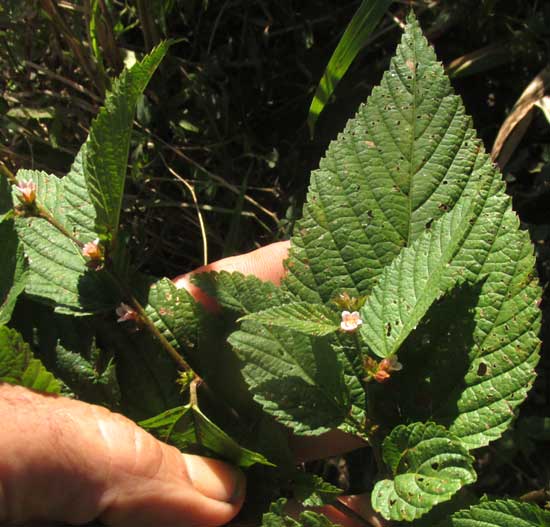
Up close, the tiny flowers displayed unexpected prettiness, as seen below in a side view of a blossom:
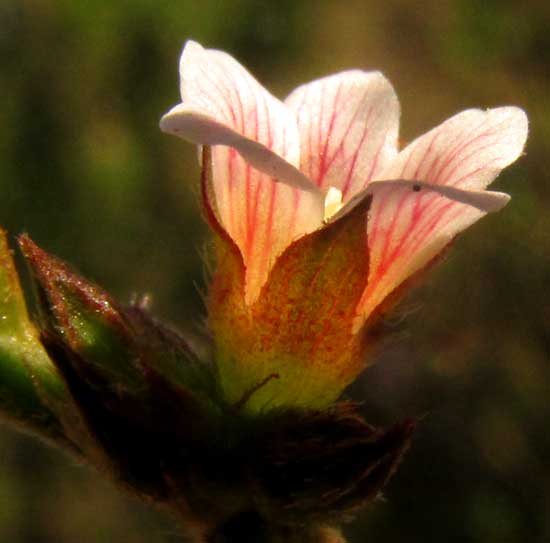
A view into the flower's interior is pleasing, too, but the structure of things is disconcerting, as you can see below:
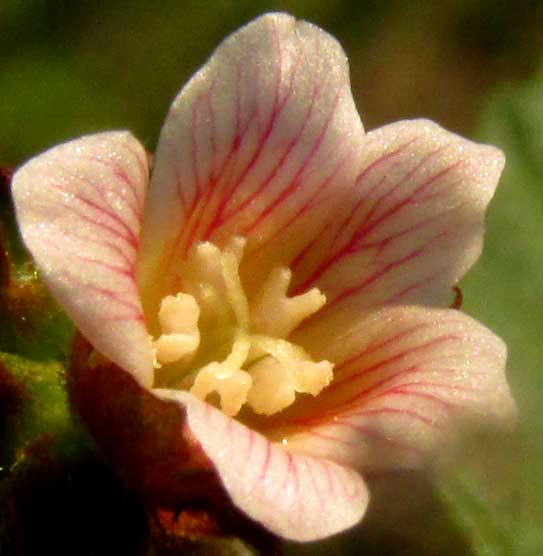
The main floral field mark of the Hibiscus Family is that the vast majority of species in the family produce flowers with numerous stamens, the filaments of which fuse at their bases with one another, often even forming a cylinder around the ovary and its style. The fencerow plant's flower just had five stamens, and the anthers were weirdly Y-shaped. Would the filaments of such unconventional stamens be fused at their bases? The flowers were almost too small to see that detail, but when one side of a corolla was removed, it looked like they were indeed fused, maybe for most or all of their length, as seen below:
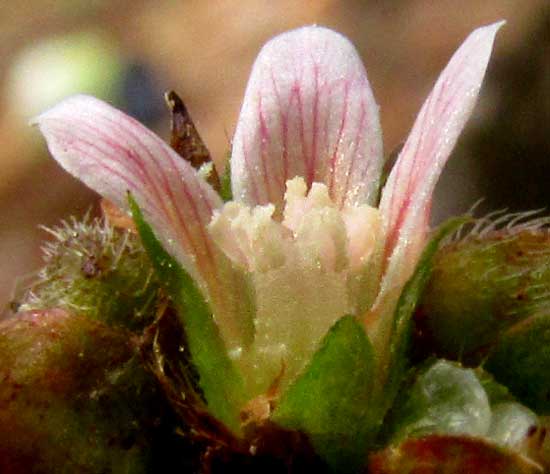
Well, we've seen that the Hibiscus Family can produce very strange flowers and fruits, especially since genetic analysis as caused several previously independent families to be lumped into one big Hibiscus Family, so by now I was confident that it was a member of that family despite its flowers. Moreover, a fruit turned up, and it couldn't have looked more like a typical Hibiscus Family fruit, as seen below:
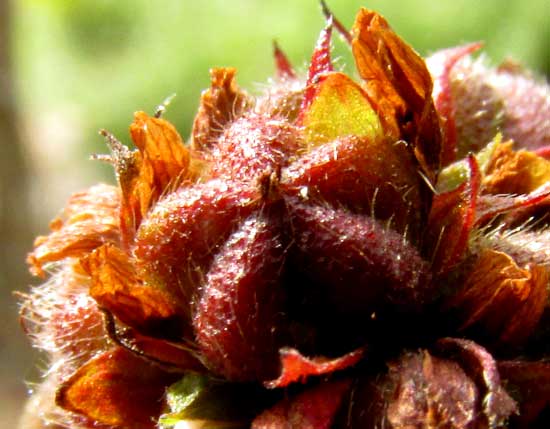
That's a five-winged capsule, and at its top, right, one of the wings is splitting open to release a single brown seed.
This is MELOCHIA NODIFLORA, and it's a shame I can't find an English name for it. It's found from Mexico and the Caribbean area south to Brazil.
Along roads at Río Lagartos on the Yucatan's northern coast we've found another Melochia species, Melochia tomentosa, which we called Teabush. At first glance the two species look very unlike one another, especially because Teabush's flowers are pinker and much larger. You can see this on our Teabush page at www.backyardnature.net/yucatan/melochia.htm
How can such dissimilar flowers appear on species belonging to the same genus? One answer is revealed in the dissected blossom at the bottom of the Teabush page, which shows that Teabush's anthers -- at the base of the flaring style arms -- display the same unusual Y shape as our Melochia nodiflora. It's always good to remember that within a genus the size of a species' parts has little to do with how the species is classified. It's the structure that's important, and in plant classification Y-shaped anthers like these are a big deal. The Flora of North America describes anthers in the genus Melochia as "2-thecate." In botany, a "theca" is an anther's lobe, which contains two pollen sacs.
In the old days the genus Melochia belonged to the tropical Sterculia or Chocolate Family, the Sterculiaceae. However, with genetic sequencing, that family has been sunk into the big Hibiscus Family.